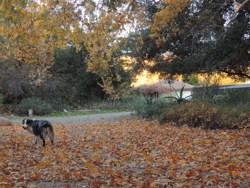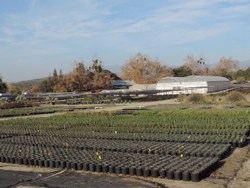 January 2014.
January 2014.
What’s up at Tree of Life Nursery?
At times it’s good to look back, reflect on the past, and try to relate what you see to what you’re doing now and in the future. Retrospection.
If you’re interested in knowing where the nursery is headed, you’ll want to know where we’ve been. We promise to keep the story short, but if you don’t have time to read it right now… that’s OK… we’re still here and things are looking up. We could use some rain though.
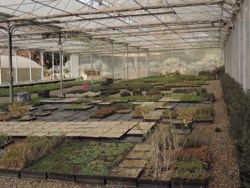 Generally speaking, 2013 was a continuation of a really bad period for nurseries in California. Construction and development had ground to a near halt and the few projects that were under construction had been bid and contracted dirt cheap during the lean years starting in 2009. No one expected the recession to last so long. Companies were operating in “survival” mode. From a horticultural standpoint, a lot of the work being performed was of poor quality; low bid design, materials and labor. It looked like no one really cared.
Generally speaking, 2013 was a continuation of a really bad period for nurseries in California. Construction and development had ground to a near halt and the few projects that were under construction had been bid and contracted dirt cheap during the lean years starting in 2009. No one expected the recession to last so long. Companies were operating in “survival” mode. From a horticultural standpoint, a lot of the work being performed was of poor quality; low bid design, materials and labor. It looked like no one really cared.
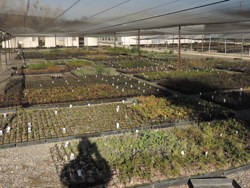 We strive for excellent horticultural practices at Tree of Life. Through the economic bad times, we managed to keep our whole crew intact. We reduced hours dramatically (3-day work week), but people could get a day’s work here and there elsewhere. We kept the retirement plan and medical coverage intact as well. We are committed to our employees, as they are to us… through thick and thin. Cash flow was the big issue, so we buttoned everything down as tight as we could. It was hard to keep the nursery up to our high standards with so few man-hours and so little money to work with. We have a great crew… some even came in on their days off as needed. We are very thankful.
We strive for excellent horticultural practices at Tree of Life. Through the economic bad times, we managed to keep our whole crew intact. We reduced hours dramatically (3-day work week), but people could get a day’s work here and there elsewhere. We kept the retirement plan and medical coverage intact as well. We are committed to our employees, as they are to us… through thick and thin. Cash flow was the big issue, so we buttoned everything down as tight as we could. It was hard to keep the nursery up to our high standards with so few man-hours and so little money to work with. We have a great crew… some even came in on their days off as needed. We are very thankful.
Everything we grow, we propagate from scratch. For example, a five-gallon manzanita is about a four-year project, starting from seed or cutting. If we had halted propagation altogether, we would have no plants in the future. If we had propagated too many plants, we would have been unable to take them to the next level, as transplanting requires cash for labor and materials. 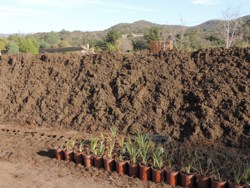 Our challenge was to speculate on plant needs for contract and inventory 3-5 years down the line, while having almost zero money to use in the present. Oh well, that’s farming.
Our challenge was to speculate on plant needs for contract and inventory 3-5 years down the line, while having almost zero money to use in the present. Oh well, that’s farming.
Things started looking better towards the end of summer. We slowly began reinstating hours on people’s work week. We could buy good materials again… potting soil components, containers, tools. We were able perform a little basic maintenance on equipment. We didn’t need to scrounge everything from out of the back forty; we could actually buy some of the needed materials to grow plants. It started to feel normal.
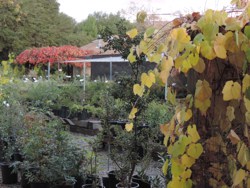 We were approaching fall, the best time for propagation and transplanting, so we even saw our enthusiasm begin to return. Five years had been a long time to try to stay positive when things just kept getting worse. We found our strength in God’s faithfulness, in the passion with which we embrace the idea of native plants, and in the delight we could still see in the lives of our customers. As beat down as we felt at times, we still believed we were up to a good thing; that the world of California native plants is inherently positive, that as far as hard times are concerned, “This too shall pass.”
We were approaching fall, the best time for propagation and transplanting, so we even saw our enthusiasm begin to return. Five years had been a long time to try to stay positive when things just kept getting worse. We found our strength in God’s faithfulness, in the passion with which we embrace the idea of native plants, and in the delight we could still see in the lives of our customers. As beat down as we felt at times, we still believed we were up to a good thing; that the world of California native plants is inherently positive, that as far as hard times are concerned, “This too shall pass.”
Awards and Highlights from 2013
As the days turned from summer to fall, we were reminded of that wonderful time of renewal we have seen every year for our 33 years in business. Our propagation calendar actually begins on the first of September every year. We made it a point to make several trips out into the backcountry, collecting seed and exploring for new and interesting plants, bringing in cuttings for propagation… these are the very activities that got us into this whole thing in the first place. It felt a little like we were starting over.
The Winter 2012/13 issue of “Fremontia” the Journal of the California Native Plant Society focused exclusively on horticulture. Nine native plant experts contributed articles to make this double-thick issue a real keeper. Mike Evans authored the feature article entitled, “Why Use Natives?” for this special edition. Look for the combined horticulture issue, (Vol.40, No.3 and Vol.41, No.1) which will be posted to the CNPS website later this month. http://www.cnps.org/cnps/publications/fremontia/index.php
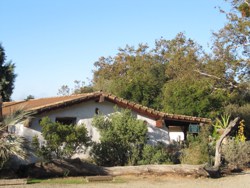 This September, Tree of Life Nursery was recognized as Critic’s Choice in the Orange County Register’s annual “Best of Orange County” competition in the Best Garden Center-Nursery category. We are grateful for the fan we have in Cindy McNatt at the Register, as well as for the many customers who show loyalty to our store: Casa ‘La Paz.’ We are proud to make our high-quality native plants available to the public and we’re lucky to be located at a truly unique and beautiful setting here in Orange County.
This September, Tree of Life Nursery was recognized as Critic’s Choice in the Orange County Register’s annual “Best of Orange County” competition in the Best Garden Center-Nursery category. We are grateful for the fan we have in Cindy McNatt at the Register, as well as for the many customers who show loyalty to our store: Casa ‘La Paz.’ We are proud to make our high-quality native plants available to the public and we’re lucky to be located at a truly unique and beautiful setting here in Orange County.
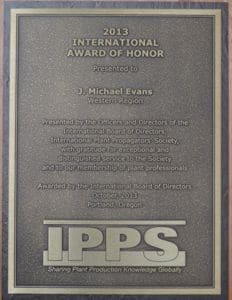 In October, Tree of Life founder Mike Evans was honored to receive the highest award form one of the most well-respected and prestigious horticultural organizations in the world. At their Annual Meeting in Portland, OR, Mike was presented the International Award of Honor by the International Plant Propagators Society (IPPS). He had served as Western Region President in 1995 and International President in 2005. After nearly 40 years in the Society, having spent so much time with the veritable “Who’s Who” list of plant propagators worldwide, Mike was recognized for his contributions to the Society and to the field of plant propagation. Humbled and honored, a complete surprise, his wife Hilda in attendance… very much a high point in Mike’s life and in the history of Tree of Life!
In October, Tree of Life founder Mike Evans was honored to receive the highest award form one of the most well-respected and prestigious horticultural organizations in the world. At their Annual Meeting in Portland, OR, Mike was presented the International Award of Honor by the International Plant Propagators Society (IPPS). He had served as Western Region President in 1995 and International President in 2005. After nearly 40 years in the Society, having spent so much time with the veritable “Who’s Who” list of plant propagators worldwide, Mike was recognized for his contributions to the Society and to the field of plant propagation. Humbled and honored, a complete surprise, his wife Hilda in attendance… very much a high point in Mike’s life and in the history of Tree of Life!
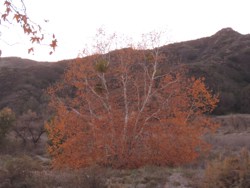 Meanwhile, back at the ranch, Mike’s partner and the real expert plant propagator Jeff Bohn can always be depended on to hold things together through good times and bad. Jeff cracked the nut on propagation techniques on several difficult species (proprietary trade secrets) and performed miracles producing plants, seemingly from out of thin air, to meet contract and inventory needs during a five year slump. Jeff never gives up.
Meanwhile, back at the ranch, Mike’s partner and the real expert plant propagator Jeff Bohn can always be depended on to hold things together through good times and bad. Jeff cracked the nut on propagation techniques on several difficult species (proprietary trade secrets) and performed miracles producing plants, seemingly from out of thin air, to meet contract and inventory needs during a five year slump. Jeff never gives up.
Just to spice things up a bit, we were approached by a local native plant enthusiast who runs in the world of big trade shows. He had an idea to feature an ecological theme for Lincoln Motor Company at the L.A. Car Show. You can read the whole story HERE of how California’s unique plant life was depicted in an ecosystem-type design, curated by Tree of Life Nursery.
We’re proud of Laura Camp, our CFO, who was recently elected statewide president of the California Native Plant Society. She has been active at the state level and in the Orange County Chapter for many years and we’re sure she will use her enthusiasm and administrative skills to make a positive contribution during her two-year tenure as President. Congratulations Laura.
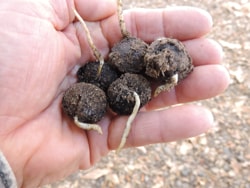 It’s dead of winter now. The big sycamores have lost almost all their leaves. We are already seeing some germination on native oak and walnut seed we got a few weeks ago. We’re transplanting like crazy, knowing we will need to have a lot of plants ready this spring. Thanks for reading this through to the end. It’s only the end of this particular chapter so we’ll keep you posted. Things are looking a lot better.
It’s dead of winter now. The big sycamores have lost almost all their leaves. We are already seeing some germination on native oak and walnut seed we got a few weeks ago. We’re transplanting like crazy, knowing we will need to have a lot of plants ready this spring. Thanks for reading this through to the end. It’s only the end of this particular chapter so we’ll keep you posted. Things are looking a lot better.
We could use some rain though.
